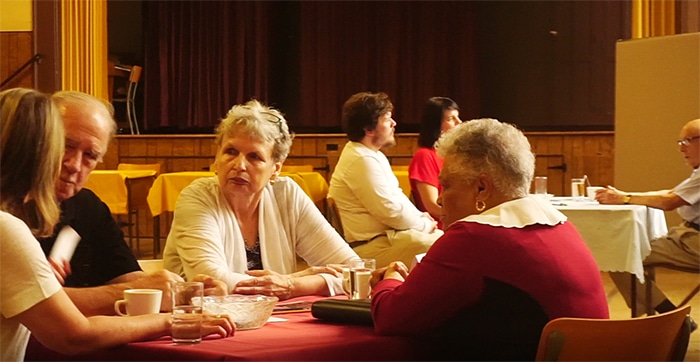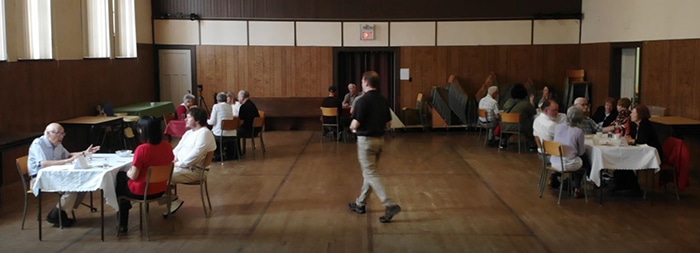
By Tom Mawlam/Special to The Voice
Editor’s note: This is part of a continuing series related to the history of Christ Church in Chatham.
If you grew up in Chatham-Kent, you have probably been on a school trip to Uncle Tom’s Cabin, toured the Milner House, or spent Labour Day weekend at Fairfield. While these activities tell important stories, there are other parts of Chatham’s history that often remain hidden in plain sight.
Christ Church, together with professors and research fellows from Huron University College, has spent this year exploring Chatham’s history through their project “Finding Christ Church: Social Justice in History, Memory, and Contemporary Practice, 1819-2019.”
A highlight of this project was the “Living Library” Event that took place this summer and was attended by members of the congregation and the community. At the event, five Chatham residents served as “living books,” sharing oral history and personal experiences that could be “checked out” over conversation and coffee by those who attended.
One of the “books” was former Member of Provincial Parliament, Darcy McKeough. Apart from being a pillar of Chatham’s civic and business community, McKeough is also a life-long member of Christ Church. During the event, he reminisced about his youth in the 1940s and 1950s, when Christ Church was one of the most prominent institutions in Chatham.
According to McKeough, at one time the church had three services every Sunday; two morning services, followed by an evening service that was broadcast over the radio.
The music and sermons attracted listeners across the region, of various denominations. Although McKeough admits that life at Christ Church has changed, he feels confident about its future as a downtown church.
Dorothy Wallace, a life-long resident of Chatham and former President of the Board of Directors for the Chatham-Kent Black Historical Society, was an invaluable book at the Living Library. When asked in a panel discussion, “How would you describe Chatham during your youth to a young person today,” she replied, “I was born and raised here and I had a community. When my father died young, the community stepped up to raise me.”
Wallace painted a vibrant picture of her life in Chatham and the pride she felt in her community. She told stories about the annual Thanksgiving suppers prepared by the former Victoria B.M.E. Church and the neighbourhood campaign that built the Orville Wright Pool.
She also shared an anecdote that as a young girl, the three churches in her neighbourhood would schedule their Sunday Schools at various times throughout the day, ensuring that there was no excuse for a child not to attend.
Samantha Meredith, Executive Director and Curator of the Black Mecca Museum, said that she meets people everyday with deep connections to Chatham’s history. Visitors to the museum frequently share their personal memories of prominent Chatham figures, ranging from Artis Lane to Fergie Jenkins.
Despite Chatham’s rich heritage, however, Meredith still finds it troubling how little many locals know about our community’s history. Although the Black Mecca Museum is quite popular amongst tourists from the United States, she finds that many locals are unaware of its presence in the community.
Meredith expressed this concern, saying, “There’s people across the street who don’t know about the museum.”
Over the course of 2019, “Finding Christ Church” will build on Chatham’s rich oral history in order to achieve a better understanding of both the church and the city’s history. The project will culminate in a conference at the WISH Centre in October, which is open to the community.







